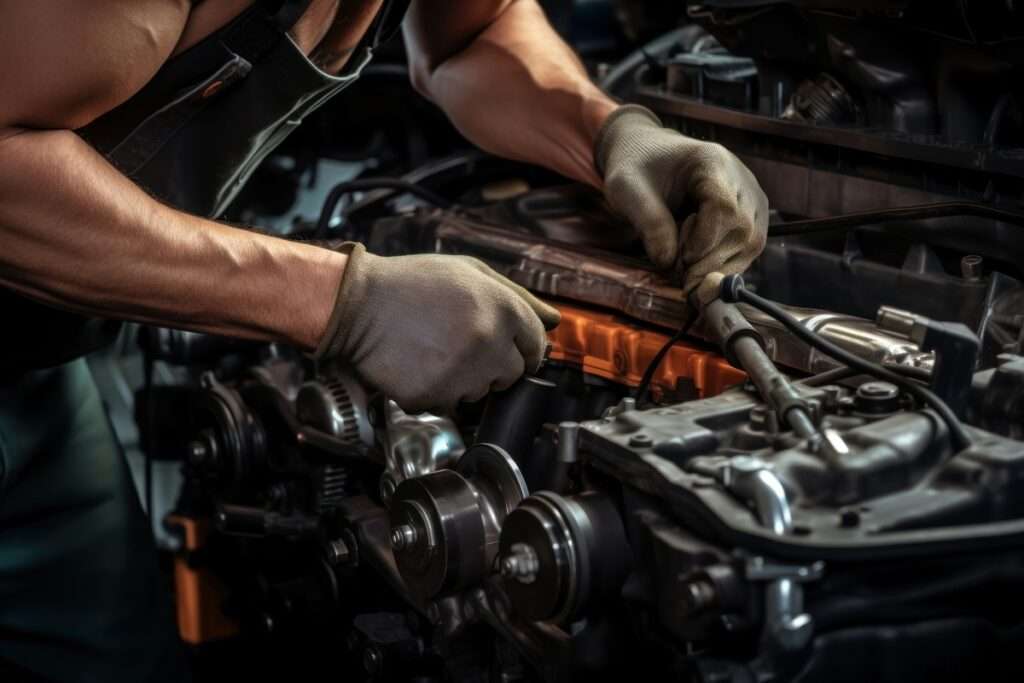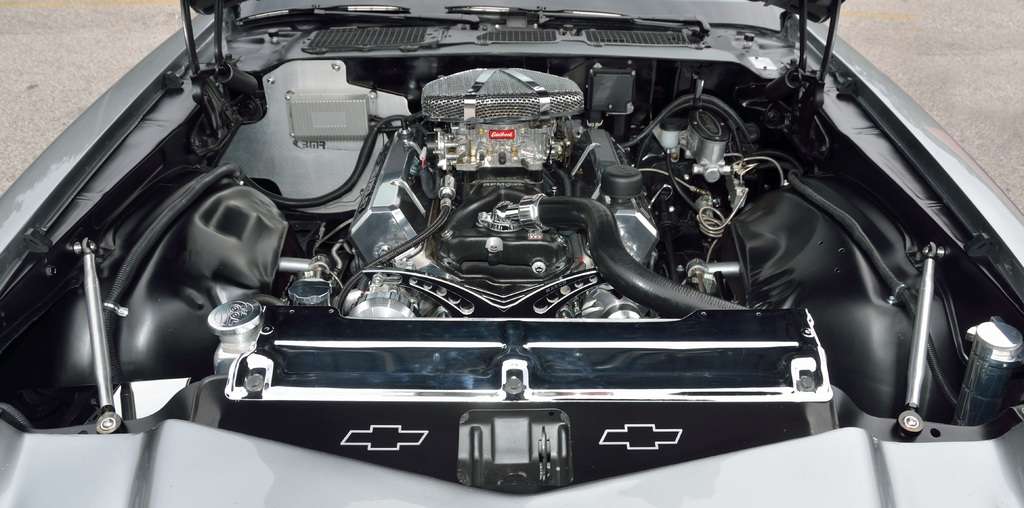In order to start a car with a bad fuel pump you need to be aware of the temporary fuel pump fix. There are several reasons why the car won’t start and a faulty fuel pump is one of them.
A faulty fuel pump affects the flow of fuel to your engine. Hence, hindering its ability to ignite properly. However, diagnosing and addressing fuel pump issues promptly can save you from further inconvenience and potential damage to your vehicle.
Temporary fuel pump fix.
Some of the solutions for a temporary fuel pump fix are installing an external electric inline pump, performing a fuel pump bypass and implementing a manual priming method using an external container of pressurized gasoline.
If you find yourself with a bad fuel pump and need a temporary solution to get your car running, there are a few options you can try before seeking professional help. Here are some methods that may help you overcome the issue:
1. Installing an external electric inline pump as an emergency workaround.
Consider installing an external electric inline pump as a temporary fix for your faulty fuel pump.
This workaround can bypass the internal relay system and provide the necessary fuel delivery to keep your car running.
Make sure to follow proper installation instructions and ensure compatibility with your vehicle’s fuel system.
2. Bypassing the internal relay system by directly powering the fuel pump.
In order to bypass the fuel pump relay, start by locating the fuel pump fuse or relay in your vehicle’s fuse box or power distribution center. Afterwards, remove the fuse or relay responsible for powering the fuel pump.
Connect a wire from the battery positive terminal to the appropriate pin/socket in the fuse box or power distribution center. This will directly power the fuel pump, bypassing any faulty relays or fuses in the system.
3. Implementing a manual priming method using an external container of pressurized gasoline.
Another option is to manually prime your fuel system using an external container of pressurized gasoline.
Ensure that you have a suitable container capable of holding enough fuel to prime your system adequately.
Connect this container directly to your vehicle’s fuel line, allowing it to supply sufficient fuel until you can address the underlying issue.
Remember, these temporary solutions should only be used as emergency workarounds and not as permanent fixes for a bad fuel pump. It is crucial to consult with a qualified mechanic or service professional to diagnose and repair any issues with your vehicle’s fuel system properly.
Tricks to make your fuel pump work.
Some of the tricks to make your fuel pump work like adding an aftermarket performance chip, tapping the fuel pump and utilizing heat or cold exposure techniques.
1. Tapping the fuel tank.
If your fuel pump motor is stuck or weak, tapping the fuel tank can provide a temporary solution.
Gently tap the fuel tank with a mallet or rubber hammer to jolt the fuel pump motor into action.
This process may help overcome any minor obstructions or mechanical issues causing the malfunctioning of your fuel pump.
Remember, this trick is only intended as a temporary fix and should not be relied upon for long-term functionality.
2. Utilizing heat or cold exposure techniques.
For a frozen fuel pump. Warm up the area around the fuel tank using a hairdryer or heat gun on low heat. The gentle application of heat can help thaw any ice that may be preventing your fuel pump from running smoothly.
For an overheated fuel pump. Cool down the area around the fuel tank by spraying it with cold water from a hose or applying ice packs. This cooling technique can help bring down the temperature of an overheated fuel pump and restore its normal operation.
3. Adding an aftermarket performance chip.
Enhance the efficiency of your existing fuel pump by adding an aftermarket performance chip.
These chips optimize the supply of fuel to your engine, resulting in improved performance and better mileage.
By fine-tuning various parameters, such as air-fuel ratio and ignition timing, these chips make your fuel pump work more effectively.
If you’re experiencing persistent issues with your fuel pump, it’s advisable to consult a qualified mechanic for proper diagnosis and repair.
Manual fuel pump reset and fuse check to start a car.
Start by locating and resetting the manual inertia switch and then proceed to checking and replacing blown fuses related to the fuel delivery system. Afterwards, proceed to verifying proper electrical connections at the fuse box and relays.
1. Locating and resetting the manual inertia switch in case it has been triggered.
Find the manual inertia switch. It is usually located in the trunk, under the dashboard, or behind one of the kick panels.
Once located, press the reset button. This will restore power to the fuel pump if it was shut off due to an impact or accident.
2. Checking and replacing blown fuses related to the fuel delivery system.
Locate the fuse box. The fuse box is typically found under the dashboard or in the engine compartment.
Identify the fuel pump fuse. Look for a diagram on top of the fuse box cover or consult your vehicle’s manual to find the specific fuse.
Inspect for blown fuses. Visually check if any of them are damaged or have a broken filament.
Replace blown fuses. Use needle-nose pliers or a fuse puller tool to remove and replace any blown fuses with new ones of matching amperage.
3. Verifying proper electrical connections at the fuse box and relays.
Inspect electrical connections. Ensure all wires connected to both the fuse box and relays are securely fastened without any signs of corrosion or damage.
Tighten loose connections. If you notice any loose wires, tighten them using appropriate tools like a screwdriver or wrench.
Clean corroded terminals. In case of corrosion, clean terminals with a wire brush and apply dielectric grease for improved conductivity.
You troubleshoot starting issues caused by a bad fuel pump by following these methods. Remember to exercise caution while working with electrical components and refer to your vehicle’s manual for specific instructions tailored to your car model.
How to jumpstart a bad fuel pump.

The symptoms of a bad fuel pump are inclusive of a car that won’t start. Therefore, you need to try jumpstarting the fuel pump by following these steps:
1. Connect jumper cables directly from another vehicle’s battery terminals.
Attach the positive (red) cable clamp to the positive terminal of the working car’s battery. Connect the other end of the positive cable to the positive terminal of your car’s battery.
Take the negative (black) cable clamp and attach it to the negative terminal of the working car’s battery. Finally, connect the other end of the negative cable to an unpainted metal surface on your car’s engine block.
2. Apply voltage directly to the positive terminal of the faulty fuel pump.
Locate your car’s fuel pump relay or fuse box. Remove any fuses or relays related to fuel pump operation. Use a wire or paperclip to bridge between two contacts in order to bypass the relay or fuse.
Connect one end of this wire or paperclip to a 12-volt power source, such as your car’s battery positive terminal. Touch the other end of this wire or paperclip directly onto the positive terminal of your faulty fuel pump.
By following these steps, you may be able to jumpstart your car’s fuel pump temporarily. However, since this is just a temporary solution, you should get your fuel pump repaired or replaced as soon as possible for long-term reliability.
Remember, always exercise caution when working with electrical components in vehicles and consult a professional if you are unsure about any step in this process.
Using a fuel pressure gauge to start the car.
To start a car with a bad fuel pump, you can use a fuel pressure gauge to monitor and adjust the pressure levels during startup attempts. This method allows you to identify abnormal readings that indicate a malfunctioning fuel pump and make necessary adjustments for optimal fuel delivery.
- Attach the gauge.
Begin by locating the Schrader valve on your vehicle’s fuel rail or test port. Connect the fuel pressure gauge securely to this valve.
- Monitor pressure levels.
With the gauge attached, turn the ignition key to the “on” position without starting the engine. Take note of the initial pressure reading displayed on the gauge.
- Identify abnormal readings.
Compare the initial pressure reading with specifications provided by your vehicle’s manufacturer. If it falls significantly below or above this range, it may indicate a faulty fuel pump.
- Adjust the pressure regulator.
If the initial reading shows low pressure, you can try adjusting the pressure regulator to increase fuel delivery. Refer to your vehicle’s manual for guidance on locating and adjusting this component.
- Retry startup attempts.
After making any necessary adjustments, attempt to start your car again while monitoring the pressure levels on the gauge. Ensure that there is enough pressure in your gas tank and that all fuel lines are properly connected.
By using a fuel pressure gauge, you can diagnose issues related to insufficient or excessive fuel delivery caused by a bad fuel pump. Remember to exercise caution when working around flammable substances like gasoline and always refer to your vehicle’s manual for specific instructions tailored to your model.
Alternative methods: Jump starter, starter fluid.
If your car has a bad fuel pump, starting it can be a real challenge. However, there are alternative methods you can try to get your engine running again. Let’s explore two options: using a jump starter and utilizing starter fluid.
1. Using jump starters or booster cables to provide additional power during startup attempts.
Connect the positive (+) cable of the jump starter or booster cables to the positive terminal of your car’s battery. Attach the negative (-) cable of the jump starter or booster cables to a metal part in the engine compartment, away from moving parts and belts.
Ensure that both vehicles are turned off before connecting the cables. Start your car and let it run for a few minutes to recharge the battery.
2. Introducing starter fluid into the intake manifold as a temporary ignition source
Locate the air intake manifold in your vehicle’s engine compartment. Afterwards, remove any debris or obstructions from around the manifold.
Next, spray an appropriate amount of starter fluid directly into the intake manifold. Then quickly attempt to start your car while being cautious of potential backfires.
Safety should always be a priority when dealing with alternative methods like these. You may be able to start your car even with a bad fuel pump by following these simple steps and considering alternative methods like using a jump starter or introducing starter fluid into the intake manifold.
Addressing poor fuel economy issues.
Regularly maintaining and replacing fuel filters is crucial to ensure optimal performance. Over time, these filters can become clogged with debris, affecting the flow of fuel and ultimately leading to poor fuel economy. By regularly inspecting and changing the fuel filter, you can prevent issues that arise from a bad fuel pump.
Checking for vacuum leaks is another important step in addressing poor fuel economy. Vacuum leaks can cause an imbalance in the air-fuel mixture, leading to inefficient combustion and decreased fuel efficiency. Inspect all hoses and connections in the vacuum system for any signs of damage or wear. Fixing these leaks will help improve your car’s overall performance.
Utilizing fuel system cleaners can also be beneficial in combating poor fuel economy caused by a bad fuel pump. These cleaners work to remove deposits that accumulate over time, improving combustion efficiency and restoring lost power. Adding a quality cleaner to your vehicle’s fuel tank on a regular basis can help maintain optimal performance.

